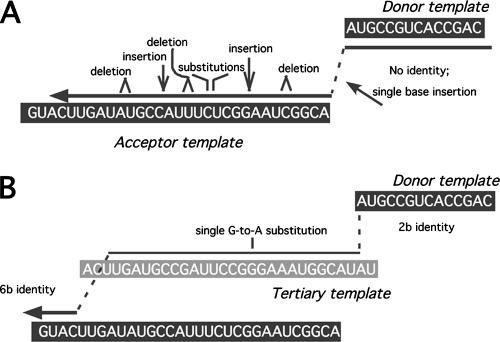FIG. 7.
Retrospective alternate model for generation of single-base insertion plus flanking hypermutations. Based on nonhomologous recombination product 72.P8 in reference 40. (A) Model proposed in reference 40. A single-base insertion occurs during nonhomologous template switching, followed by junction-associated hypermutation by RT as it copies the acceptor template. (B) Splinted recombination model for single-base insertion. RT uses 2 bases of microidentity to switch to the tertiary template and then 6 bases of microidentity to switch back to the acceptor template. This model calls for one base substitution between the candidate splinting template, identified by BLASTn as GenBank accession no. V01204.1, which mapped to the U3 region of a spleen necrosis virus. Note that TK gene expression in the vector used (40) was driven by a spleen necrosis virus promoter, and thus it seems likely that the apparent 1-base insertion in a nonhomologous crossover junction here arose via splinting recombination with a distal portion of the vector RNA.

